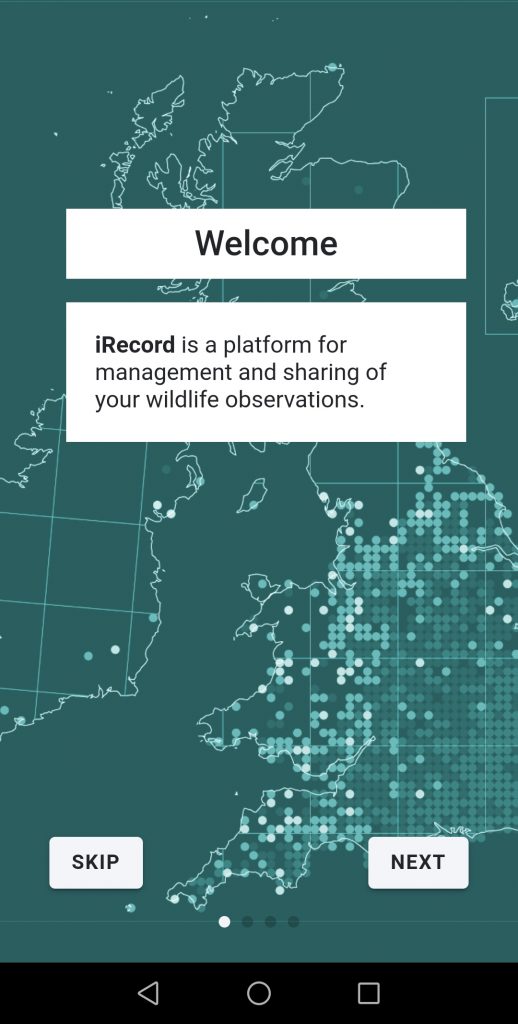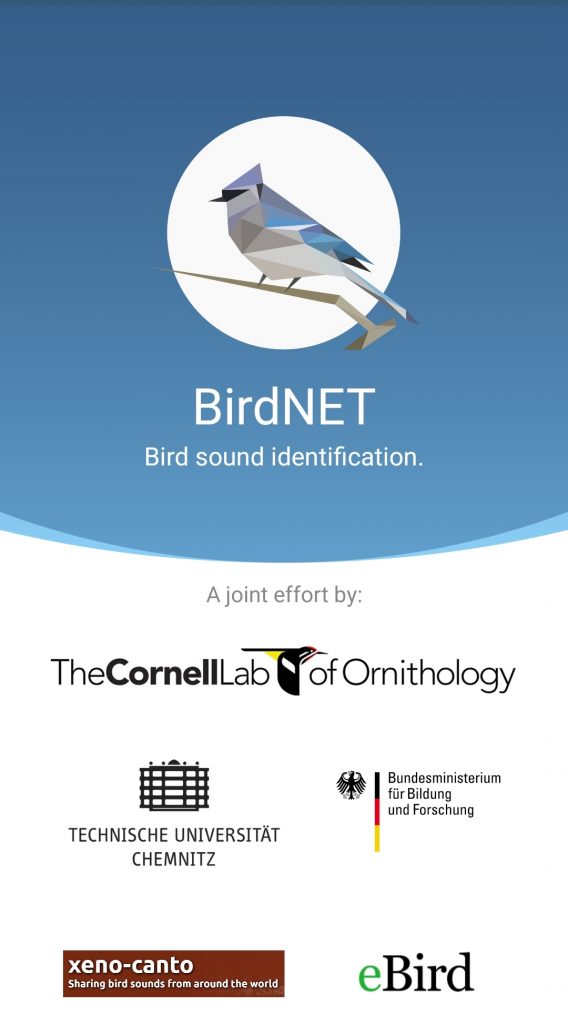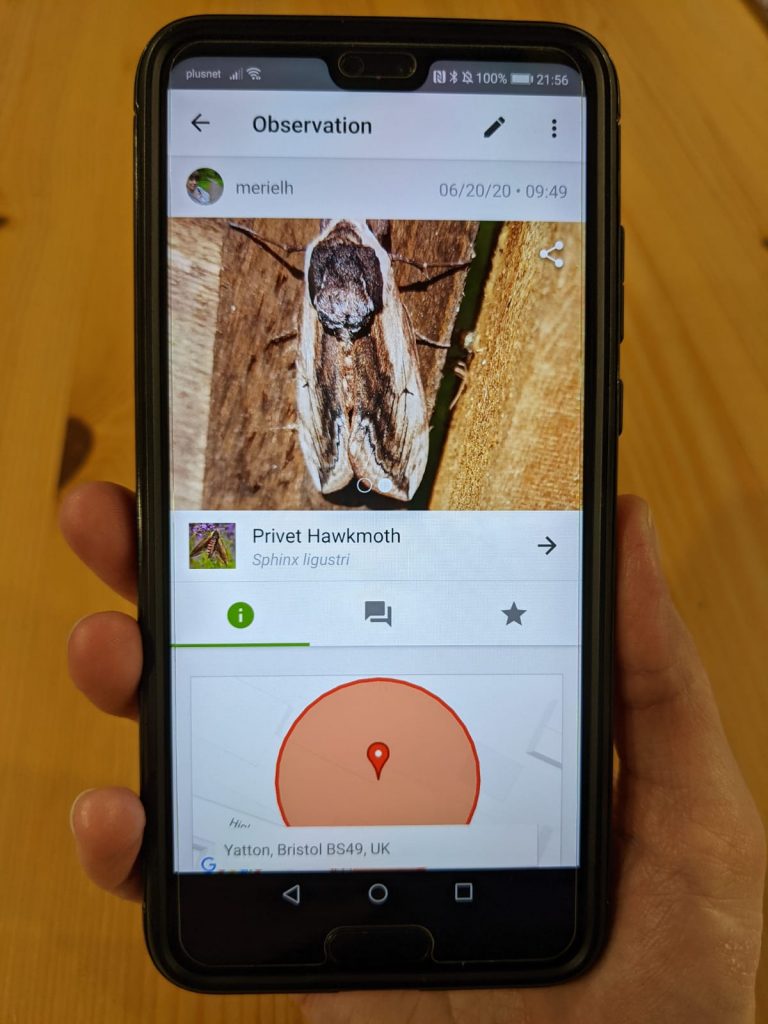Wildlife in the palm of your hand: the best apps for connecting with nature
- 28 May 2021
-
 Meriel Harrison
Meriel Harrison
- Birds, Flowers & Plants, Insects, Trees, Wildlife
In recent years there’s been an explosion in the number of apps for identifying, mapping and recording wildlife. Here we look at some of the best to help you learn more about the plants and animals you see and hear when you’re out and about – and contribute to science too!
Be a record maker
Two of the biggest and most widely used apps for identifying wildlife are iRecord and iNaturalist. These apps allow you to upload photos and other key information about what you’ve seen, with the app suggesting likely identifications. Both iRecord and iNaturalist aim to make it easy for wildlife sightings to be collected, checked by a community of experts, and made available in the form of biological records. Put simply, biological records are data that shows what species are found where, and in what numbers – all of which can help to inform the action needed to help wildlife to survive and thrive.
Every local area has a centre which looks after biological records, and the local centre for our area is the Bristol Regional Environmental Records Centre (BRERC). BRERC explained to me that these apps can be really useful for generating records, because they provide such a convenient way to get into the habit of recording the wildlife you see. iRecord is more tailored for UK wildlife, while iNaturalist was developed for international use. While the apps generate valuable data, it’s not in the exact format that BRERC needs and so some extra work is needed compared to when data is submitted directly to them – which you can do via a form on their website. BRERC and other organisations are working on ways to make their systems and the apps more compatible, so that the data can flow more freely in the future.

Find out who your feathered friends are
Almost 3 million people in the UK go birdwatching, so it’s no surprise that there are plenty of apps out there to help identify birds both visually and from their songs and calls. The Collins Bird Guide for European species is now available in app form for Apple or Android, with clear illustrations, recordings of songs and calls, and descriptions of habits and distribution. The app has won plenty of praise, with Chris Packham describing it as “fantastic”. While it isn’t free, it gives you the comprehensive information that Collins guides are known for with the added convenience of having it all on your phone while you’re out and about.
Whether you’re just starting out or developing your expertise, a bird song identification app can be a huge help in working out species you are listening to. These apps tend to work in a similar way: you record a snippet of bird song using your phone, and the app analyses the recording and suggests likely matches. One of the most popular and accurate is the free BirdNET app, which trawls an artificial neural network of 1,000 of the most common North American and European birds to tell you the most probable matches as well as generating data to contribute to conservation research.
The free BirdTrack app developed by British Trust for Ornithology (BTO) provides a handy place for regular birders to store their records, with the data also contributing to BTO’s scientific work. You simply record all the species you see while you’re out and about or birdwatching at home. Through the app you can see what bird sightings other users have logged recently in your area, and keep lists of the species you have spotted year by year.

Get to grips with the greenery
There are even more apps to help identify wild plants, fungi and flowers than there are for birds: it really is a jungle out there! Many of the most popular are aimed at garden plants, but there are apps that will tell you what you’re seeing out in the wild as well by analysing photos taken with your phone. A recent analysis found that while apps can’t replace skilled ecological training, many of them actually do a pretty good job and are brilliant for nurturing a budding interest in botany.
Among the apps that performed best in the analysis are Seek, which connects to experts who can help verify your identification, and Flora Incognita, which guides the user to make some initial choices about the type of plant to help narrow down the options. Google Lens, a photo identification service which is not specifically aimed at plants, also performed surprisingly well compared to the more specialist apps.
The Woodland Trust’s Tree ID app has been around for several years and unlike the newer kids on the block, it relies on good old-fashioned detective skills rather than artificial intelligence. Like a botanical key, the app asks you a series of questions about the tree you’re looking at and uses your answers to narrow down the options and suggest an identification. Because it relies on judgements – is the leaf hairy? Is it shiny? – there is margin for error, but it’s a great introduction to learning the features that differentiate between tree species and it’s especially good for getting children interested.
Small things bright and beautiful
Creepy crawlies are among the creatures we come across most often in our everyday lives, so looking out for spiders, bugs, centipedes and slugs means you can go on a wildlife safari without even leaving your home or garden. But with over 4,000 species of beetle alone found in the British Isles, identifying minibeasts can be a tricky task.
While there are specialist apps out there – Picture Insect claims to have a 95% accuracy and over 1,000 species in its database – your best bet may be to use iRecord or iNaturalist, where the community of users and experts can help to suggest and confirm identifications from your photos.
Butterfly Conservation has teamed up with iRecord to develop a free iRecord Butterflies app, which guides you through the identification process and lets you compare photos with an image library to confirm what you’ve spotted. The records generated through the app help inform Butterfly Conservation’s efforts to reverse declining butterfly numbers, and you can use it to take part in the annual Big Butterfly Count in August.

Phone a friend
Many YACWAG members have years of experience in observing and recording the wildlife that is found in the local area, and they are more than happy to share their knowledge. The YACWAG Facebook group is a brilliant place to share your sightings and photos and ask for help in identifying what you’ve found. It’s also a great way to see what other people are spotting and get to know the plants and creatures that live in and around Yatton and Congresbury.
During last year’s lockdowns the rare yellow loosestrife bee was found living in YACWAG’s Stowey Reserve – the first time this bee has ever been recorded in the Bristol and North Somerset region. There may be many more species out there just waiting to be discovered!
© Copyright YACWAG, or original authors. All rights reserved. | Registered charity 1076362 | Privacy policy | Cookie policy | Terms & Conditions |Web design: StanfordGraphics


